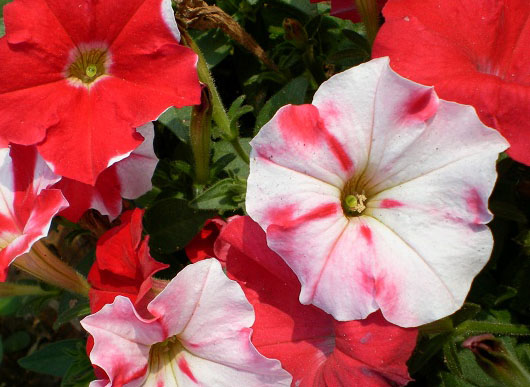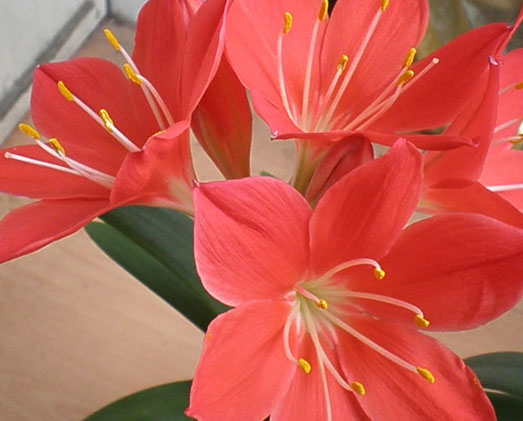What should I do if I hang the golden bell upside down?
The pest that hangs the golden bell upside down is mainly red spider. The best control method is to put the plant in a well-ventilated place and spray the whole plant, especially the back of the leaves, with heavy water. This is because the indoor air is dry, and the eggs are directly harmful to the plants after hatching into adults in a suitable environment, but mites are afraid of dampness and can be solved by spraying with water frequently.
If it is too slow to spray, use pesticides to spray directly on the leaves, you can choose triclofenac, avermectin and other special fungicides, dilute about 1000 times the liquid. When spraying wine, you should be comprehensive and meticulous, and make up the spray in case of rain within 12 hours after spraying.

In the prevention and control of common diseases and insect pests of white palm, the most common pests are aphids, whitefly, thrips and so on. What should we do when we raise white palm insects? It is particularly important to distinguish the types of pests, take effective pest control measures, and pay attention to late maintenance.
1. Aphids
Symptoms: aphids, also known as greasy worms or honey worms, are about 1.5-4.9 mm long, usually 2 mm. By absorbing juice through needle mouthparts, the stems and leaves of white palms are curled and withered, which often occurs in spring and autumn.
Control measures: ⑴ can use brush to remove aphids, if serious need to cut off branches and leaves; ⑵ can use 50% marathon emulsion diluted to 100x solution spray; ⑶ in accordance with the breeding methods of white palm and precautions for later maintenance.
2. Whitefly
Symptoms: whitefly is a kind of pest with black, red or yellowish wings, with a body length of no more than 3 mm. It is one of the most harmful pests in the prevention and control of common diseases and insect pests in white palms. Its shape is oval or nearly round, and after absorbing the juice of white palms, it will cause it to weaken or even die.
Control measures: ⑴ can clean up the whitefly, you can use a brush or stick; ⑵ can use high temperature suffocation, such as controlling the temperature at 45-48 degrees, humidity above 90%, whitefly will basically die after 2 hours; ⑶ usually pay attention to fertilization should not be too much, the environment should be well ventilated.
3. Thrips
Symptoms: a yellow, brown, or black pest with a body length of about 2 mm that absorbs the sap of the young tissue of the plant, especially young leaves and buds, and causes serious damage.
Prevention and control measures: ⑴ strengthens the management of fertilizer and water, which can promote the growth of white palm and reduce the probability of thrips; ⑵ uses 25% thiazide water dispersible granules diluted to 5000 times solution for root irrigation; ⑶ strengthens late maintenance.
Common diseases of white palm
1. Leaf spot
Symptoms: leaf spot is the most common in the prevention and control of common diseases and insect pests, there will be oval, long light reddish brown spots on the leaves, green circles around them, irregular patches after expansion, and black spots on the spots.
Control measures: ⑴ cut off the diseased tissue and take centralized burning; ⑵ is sprayed with 38% cuproloxil diluted to 1000 times solution, or it can be sprayed with 70% manganic solution diluted to 500x solution.
2. Brown spot
Symptoms: the lower leaves begin to get sick, and then spread upward, showing purple-brown markings at the beginning, showing purple-brown markings, then turning black, and finally withered and yellow leaves, white palms will not blossom.
Control measures: in ⑴ high temperature and humidity weather, we should apply less nitrogen fertilizer, but keep a certain amount of phosphorus and potassium fertilizer, avoid watering in the evening; at the initial stage of ⑵ disease, spraying with Dysen zinc and manganese diluted into 800x solution, once every 5 days, 3-4 times can prevent the disease from spreading.
3. Anthrax
Symptoms: initially produce watery light green spots at the tip or edge of the leaf, then spread along the veins called translucent irregular spots, and finally change from brown to grayish cyan.
Control measures: ⑴ removed diseased leaves; ⑵ was sprayed with 50% carbendazim wettable powder diluted to 1500 times solution, or 25% carbendazim wettable powder diluted to 600x solution for spraying.
What to do when blue snowflakes grow insects? pest control of blue snowflakes / 3 insect pests
Blue snowflake is a kind of highly ornamental plant, of course, even beautiful flowers will gradually wither when they encounter diseases and insect pests, and their beauty is no longer beautiful. How to deal with blue snowflake worms? when you encounter this kind of problem, you have to know what kind of pest you encounter first. Only in this way can you deal with it pertinently. About the blue snowflake pest control needs to do, the following editor will take you to understand.
First, what to do when blue snowflakes grow worms / targeted treatment
General plant growth insects, must be due to problems in the breeding process, on the breeding problems, you can refer to the blue snowflake culture method for reference, here the editor does not introduce too much. If blue snowflakes grow insects, we do not have to be in a hurry, as long as we find out what the problem is and what kind of pests it is, it is still very simple to deal with it. With regard to the prevention and control of blue snowflakes' diseases and insect pests, the policy is mentioned below, and we can move on.
Prevention and control of diseases and insect pests of blue snowflakes
1. Mite pest
Mite is one of the main pests that harm blue snowflake. It is a kind of animal with extremely smiling volume, and its volume is generally about 0.5mm. When blue snowflake encounters this kind of pest, its leaves will bend inward. Generally, when blue snowflake appears this symptom, it can basically be judged to be a mite pest.
Prevention and control methods: if this phenomenon occurs in the mature stage, you can directly choose to spray with mites, and if blue snowflakes appear this phenomenon in the seedling stage, it is best to use 0.01% peptidergic nitrogen to spray the leaves.
two。 Root knot line pest
Root-knot nematode is an omnivorous pest, which generally harms the roots of plants, and many plants are deeply harmed by it. The best way is to pour more water and air during the cultivation of blue snowflakes to keep the soil at a certain amount of moisture to prevent it. Of course, in case of this kind of pest, it still has to be solved.
Control method: root knot line pest is not a common pest of blue snowflakes, and the best way to solve this pest is to spray 80% bromochloropropane EC diluent on the soil surface.
3. Scale shell pest
Scale shell pest is a kind of pest in many plants, and it is one of the main pests that harm garden plants in China. It will suck the sap of blue snowflake leaves, causing branches and leaves to wither, and if it is not treated for a long time, it can directly cause the death of the whole plant. So when you encounter this kind of pest, you must deal with it in time.
Control methods: the most direct way to encounter scale insects is to use 25% imidophos EC and 1000 times liquid spray to kill.
It is not terrible for blue snowflakes to grow worms. What is terrible is that they do not know how to deal with them, which leads to the death of blue snowflakes. I believe that after reading this article, everyone should know how to deal with such problems. This is the editor's introduction to the pest control of blue snowflakes. I hope I can help you.
- Prev

What are the common diseases of Petunia?
1. Powdery mildew. After the disease, the diseased leaves were removed in time, and 75% chlorothalonil 600~800 times solution was sprayed at the initial stage of the disease. 2. Leaf spot disease. Avoid bruising leaves as much as possible, and pay attention to preventing wind damage, sunburn and freezing damage; timely remove diseased leaves and burn them, and pay attention to removing fallen leaves
- Next

How to prevent and cure red leaf spot of Zhu Ding?
If Zhu Dinghong is not properly maintained, leaf spot disease will occur easily in late autumn and early winter, and leaf tip, leaf surface and leaf edge will get sick. At the initial stage of the disease, there are small purple-brown spots on the leaves, which will expand into brown and irregular spots if not controlled in time, then mottled withered yellow, and finally grayish white.
Related
- Fuxing push coffee new agricultural production and marketing class: lack of small-scale processing plants
- Jujube rice field leisure farm deep ploughing Yilan for five years to create a space for organic food and play
- Nongyu Farm-A trial of organic papaya for brave women with advanced technology
- Four points for attention in the prevention and control of diseases and insect pests of edible fungi
- How to add nutrient solution to Edible Fungi
- Is there any good way to control edible fungus mites?
- Open Inoculation Technology of Edible Fungi
- Is there any clever way to use fertilizer for edible fungus in winter?
- What agents are used to kill the pathogens of edible fungi in the mushroom shed?
- Rapid drying of Edible Fungi

